E-mountain bikes – they are your ticket to adventure-land, but to make sure that the ticket seller doesn’t try and pull a fast one on you, read this: We’ve tested nine of the most promising full-suspension e-mountain bike models of the coming season. And do you know what? Adventure-land just got even better! All of the technical finesse, seriously top-of-the-range performances and sometimes qualitative disappointments, are here in abundance. So which e-mountain bike is set to be the best on the market? We’ve found out!
Update November 2016: This article is from 2015, in the meantime we’ve published a more current group test: The most exciting E-MTBs of 2017 in comparison
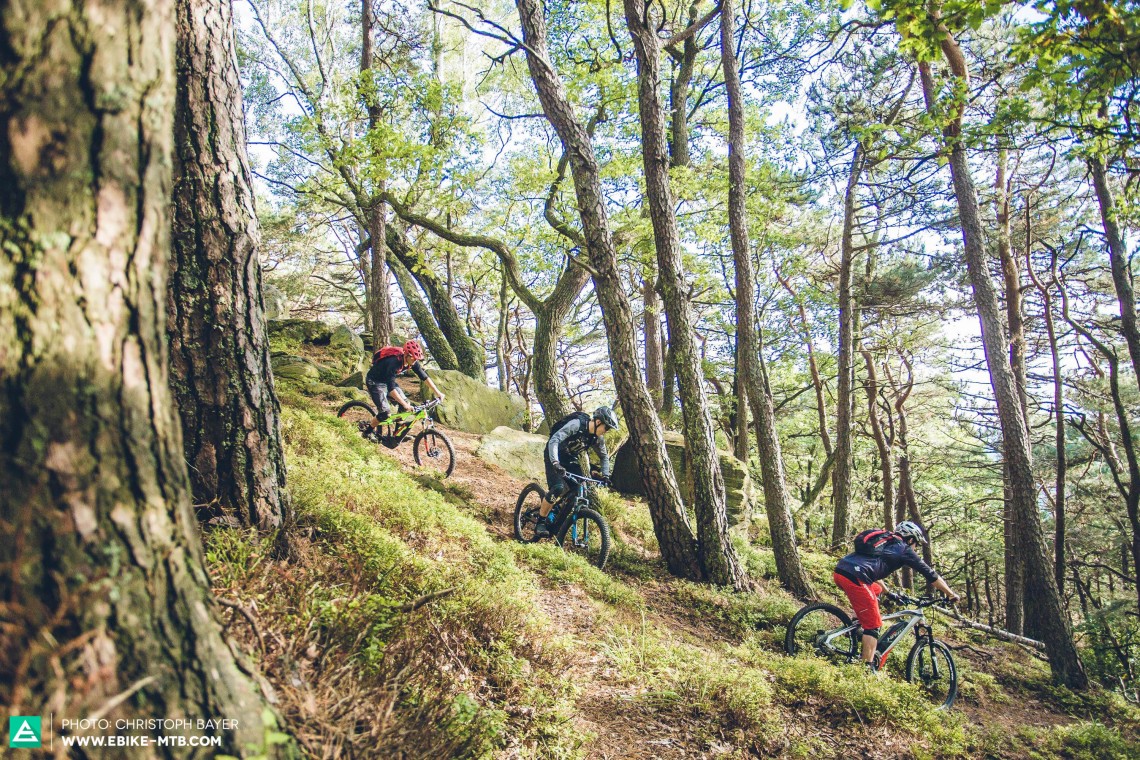
For 2016, the choice and quality of e-mountain bikes have reached dizzy new heights. And while previously just a handful of companies understood the appeal of creating bikes with motors, now almost every brand has designed a line of e-bikes for various uses. However, remember that not everything that glitters is gold, right? So as the number of models soars, the likelihood (or rather, the danger) of buying a ‘duff’ model increases at a similar rate. So just how are we supposed to make the right decision when we’re faced with such a multitude to choose from? Categorising the bikes – in the same manner that we know from regular mountain bikes, such as cross-country, trail, enduro, and downhill – doesn’t hold any relevance for e-mountain bikes (although many brands and a large part of the media haven’t grasped this yet). The proportional weight differences are too minor, and an individual’s personal needs are too widespread. The parameters that work for traditional mountain bikes take on new dimensions when it comes to e-mountain bikes; factors such as efficiency are of secondary importance due to the power of the motor, and therefore need to be redefined.
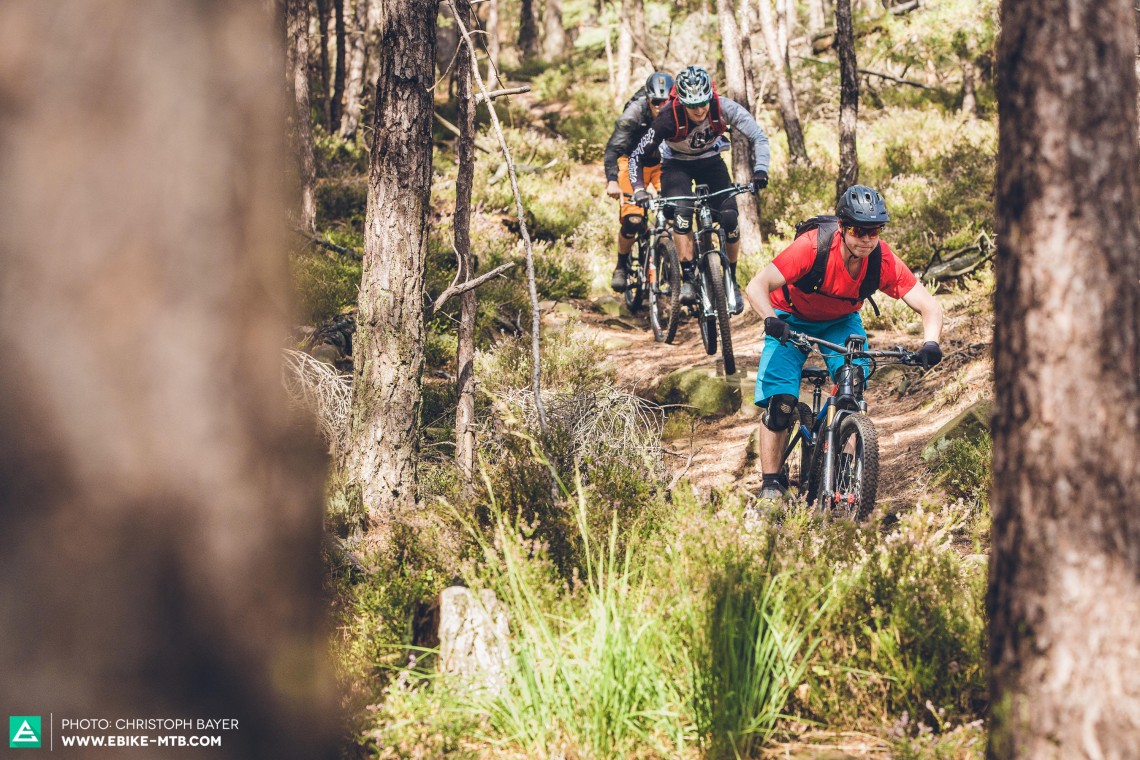
The spec is what counts.
This group test says it all: a few extra grams can make a seriously positive impact on a bike – provided they’re in the right spot. The tires, brakes, and suspension are of particular importance. Much like we deduced from our first group test over twelve months ago, it’s satisfying to see that more and more brands are catching on and duly optimizing the spec of their bikes. Yet even in this group test, there are certain bikes with wasted potential because their spec just doesn’t live up to the rest of the bike. In short: there’s still work to be done!
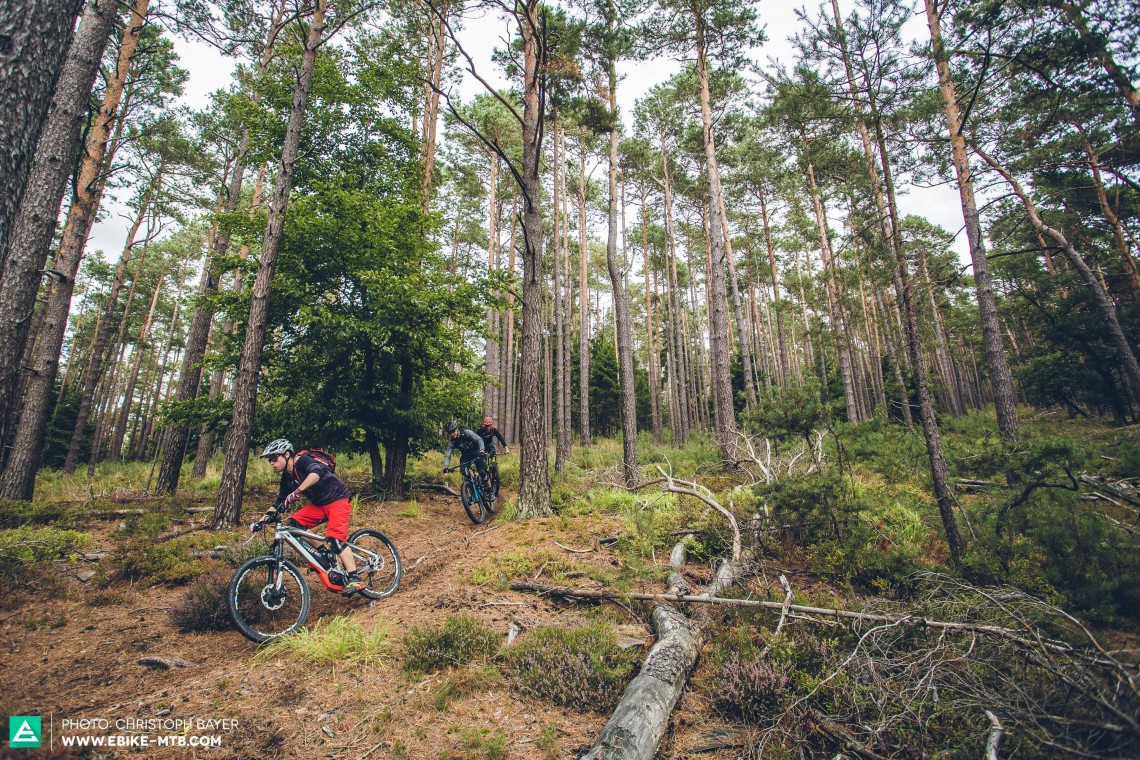
The significance of integration
Defining a bike by its motor is now becoming a relic, a habit from times gone by. In fact, as the bike’s overall concept increases in importance, you’re unlikely to hear anyone declare, for example, that they’d ‘really like a Bosch e-bike.’ This step really brings the topic of integration into the foreground. How can a bike that costs over € 5,000 still suffer from the presence of a cheap-and-cheerful part that can end up ruining the performance of the pedal-assist?
We’re talking spoke magnets. Specialized have come up trumps with some super exciting and – dare we say it – ground-breaking innovations on their new Turbo Levo. Integrating the speed sensor on the disc brake mounts is a clever idea and eliminates an annoying problem of current models with spoke magnets – i.e. that your motor stops working when the magnet moves on the spoke. Furthermore, they’ve eliminated the exposed display on the bars. However, the bike we tested was still in the prototype phase and therefore redundant in our group test, just like the brand-new ROTWILD R.X+. At the time we carried out our tests, neither of these two spanking-new bikes had a finalized spec – and both showed weaknesses that we are certain will be eradicated by the time the production bike is launched. Yet we still wanted to share our conclusions on these bikes, which you’ll find in the next few pages.
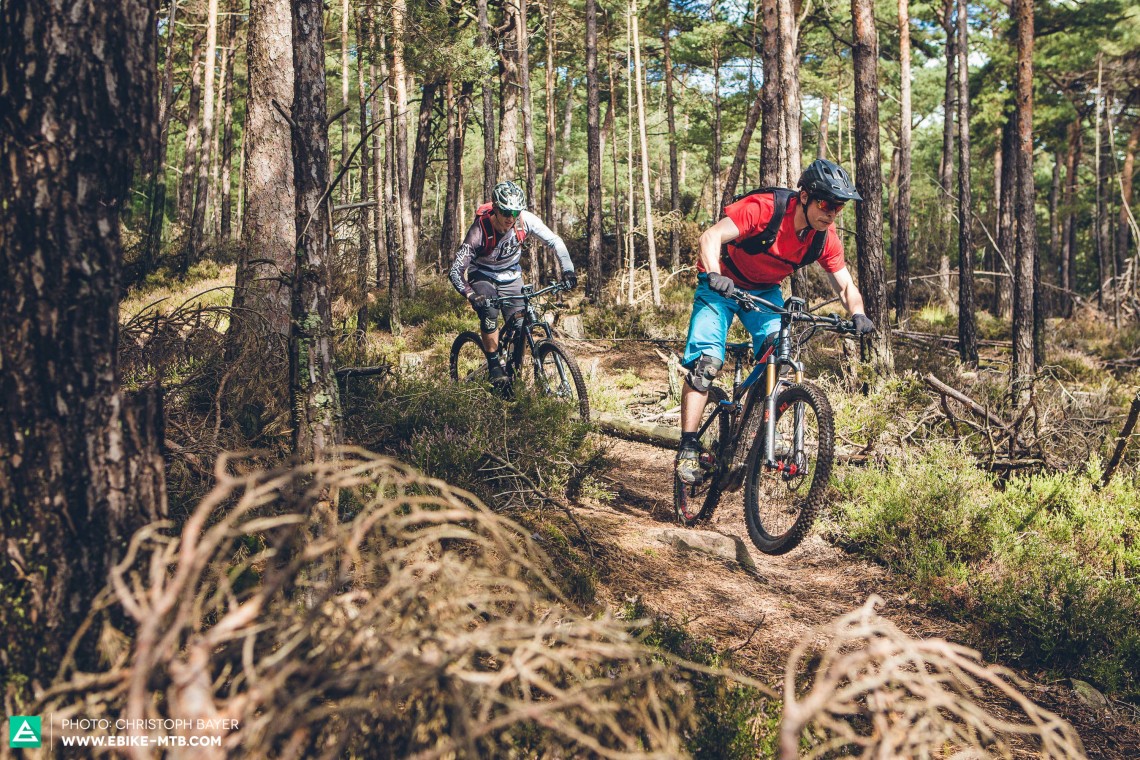
Plus-size tyres: the game changer for 2016
Three of the seven bikes in this group test already have plus-size tyres: we’re talking tyres that measure from 2.8″–3.0″ in width and combine with wider rims (between 35–50 mm internal width) to provide a massive boost to traction, grip, and stability. Plus-size tyres, considered a miracle of traction, comfort, and stability, are said to unite the advantages of a fat bike (tyre widths of 4″ +) with the agility of traditional tyres – but it’s undeniable that the current state of plus-size tyres still demands compromise.
Achieving the perfect performance for plus-size tyres means nailing the correct air pressure, and even increments of just 0.2 bar can have a decisive impact on how the bike feels to ride. Too much air and the tyres are too hard; the profile lacks the flexibility to adapt to the terrain, causing a reduction in traction. Too little air, on the other hand, and the tyres deform excessively, making you feel like you’re riding a pair of wallowy, slowly deflating airbeds. Our testing deduced that a pressure on the front tyre of 1.1–1.2 bar and a rear pressure of 1.2–1.3 bar for a 75 kg rider (without gear) is optimal.
The big test
A total of nine e-mountain bikes – the most interesting and promising models for the coming season – stepped up for our group test, including two prototypes. No expense was spared for this round of testing as we tore up South Tyrol, Landau (in Germany’s Rhineland-Palatinate), and our lovely home trails around Stuttgart. While countless test kilometres were ridden on some vastly different terrain, we also undertook discussions with bike designers, developers, racers and less experienced riders too.
The decisions regarding the test criteria for this group test were largely set by you guys – or, at least, part of you: 1,515 people took part in our first readers’ survey (more details on page 23). And it’s not just pro mountain bikers who denote what’s crucial for the tests we carry out, but rather the majority of you: 80% of our readers primarily ride flowing singletracks and forest trails. So naturally, why head to gnarly alpine terrain when we’re all more likely to be out on our flowing home trails?

All bikes tested:
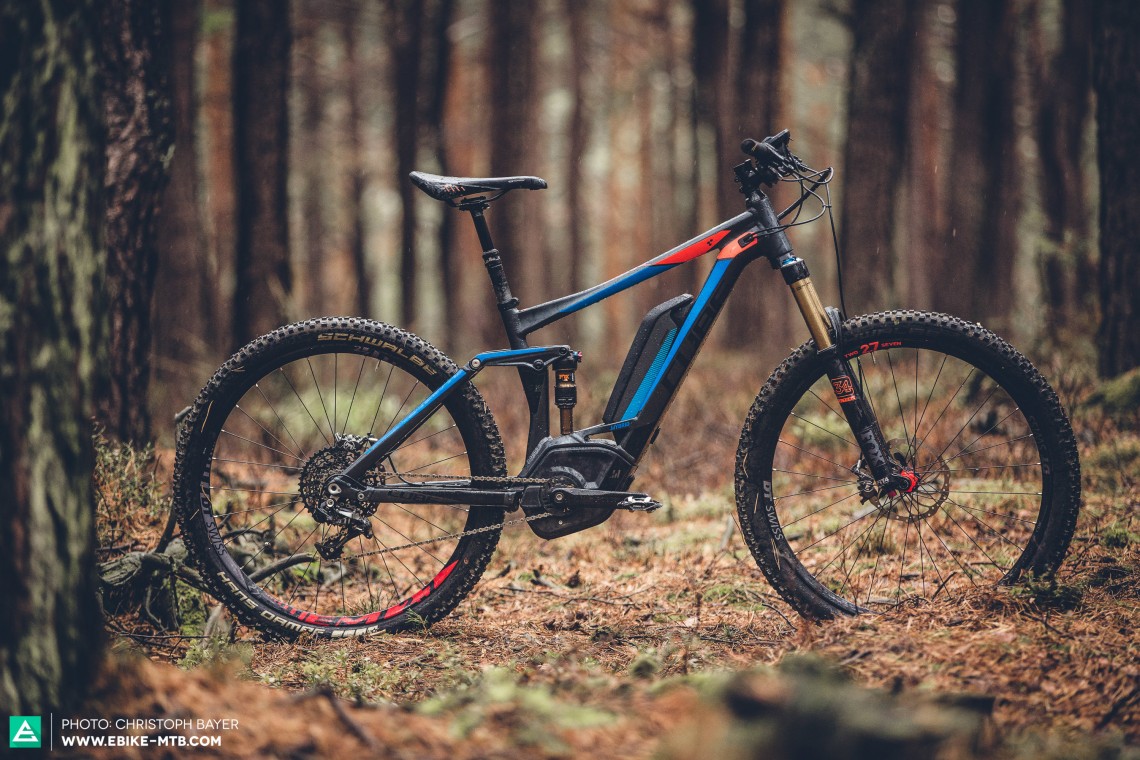
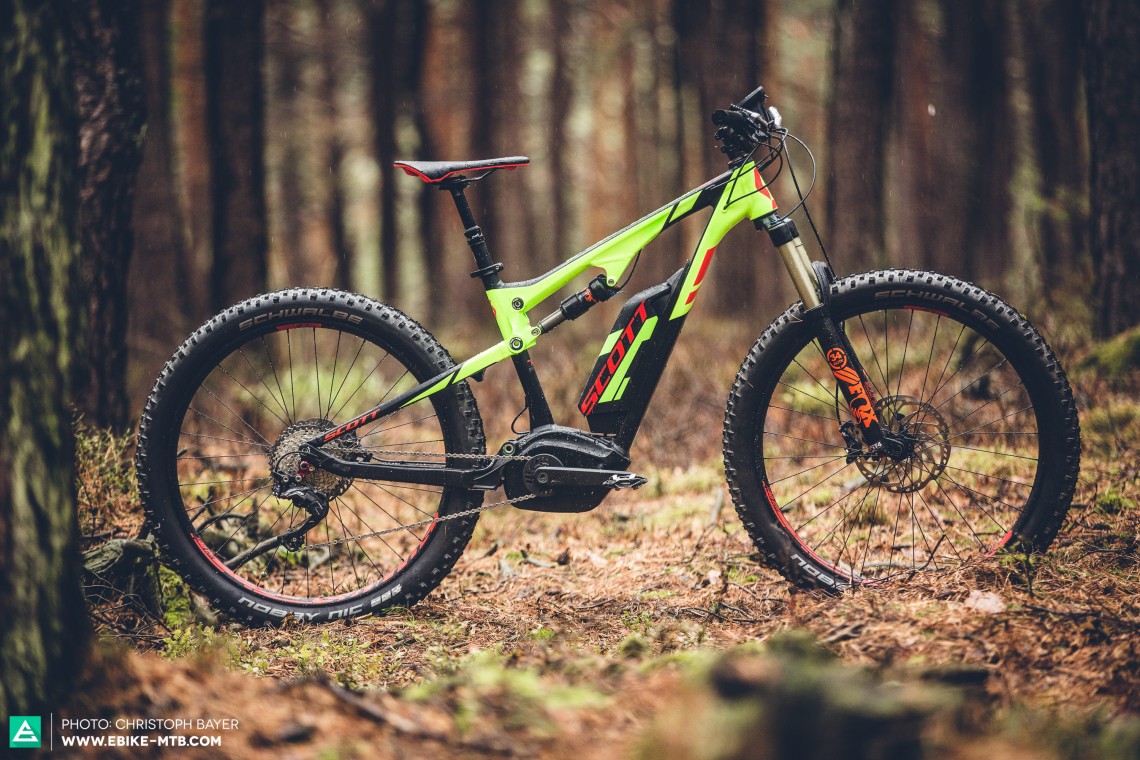

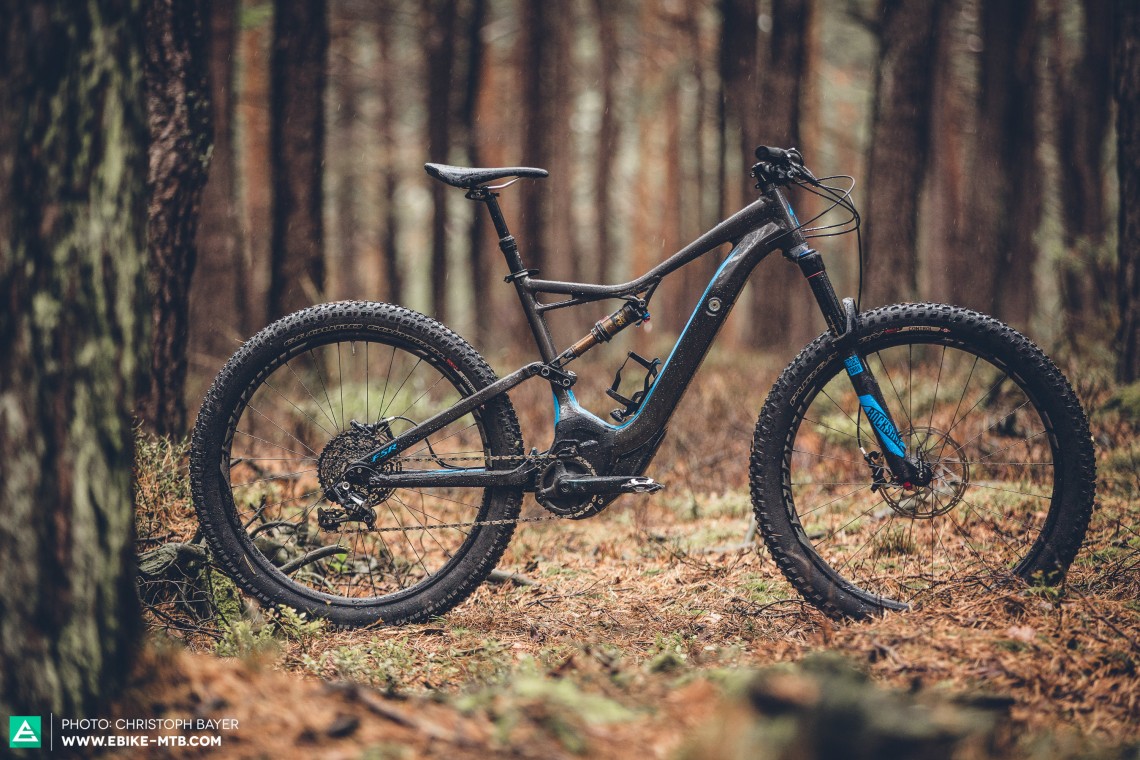
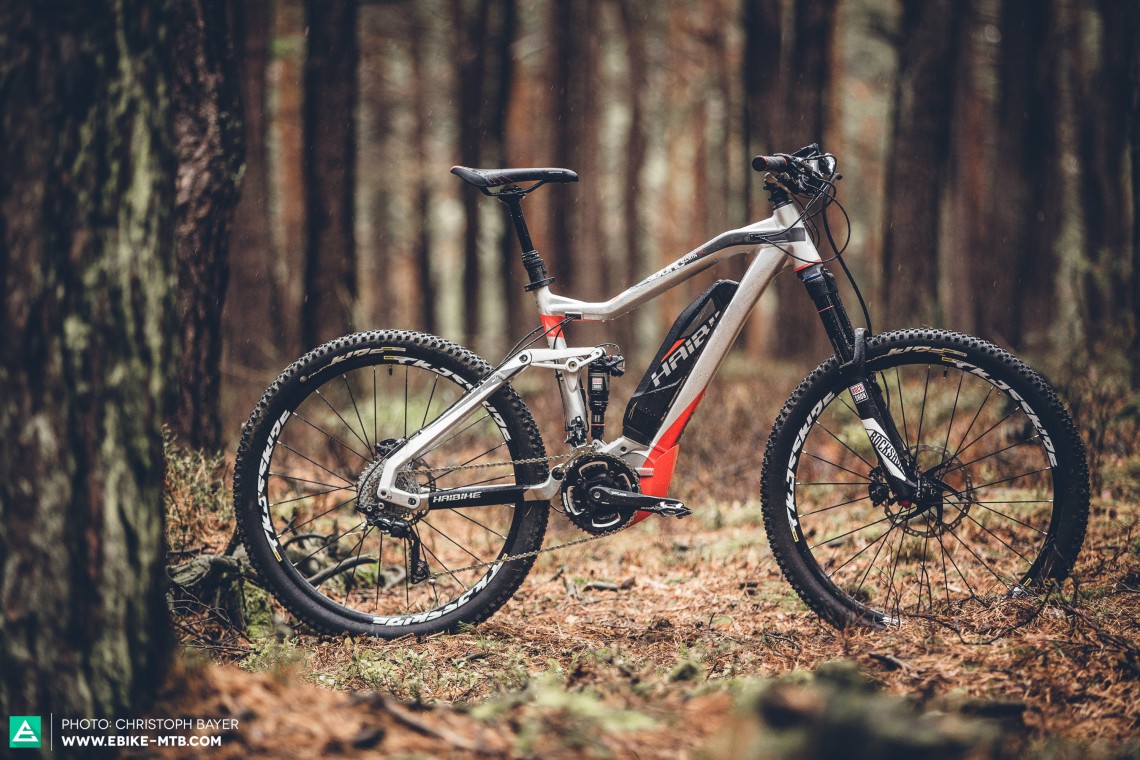

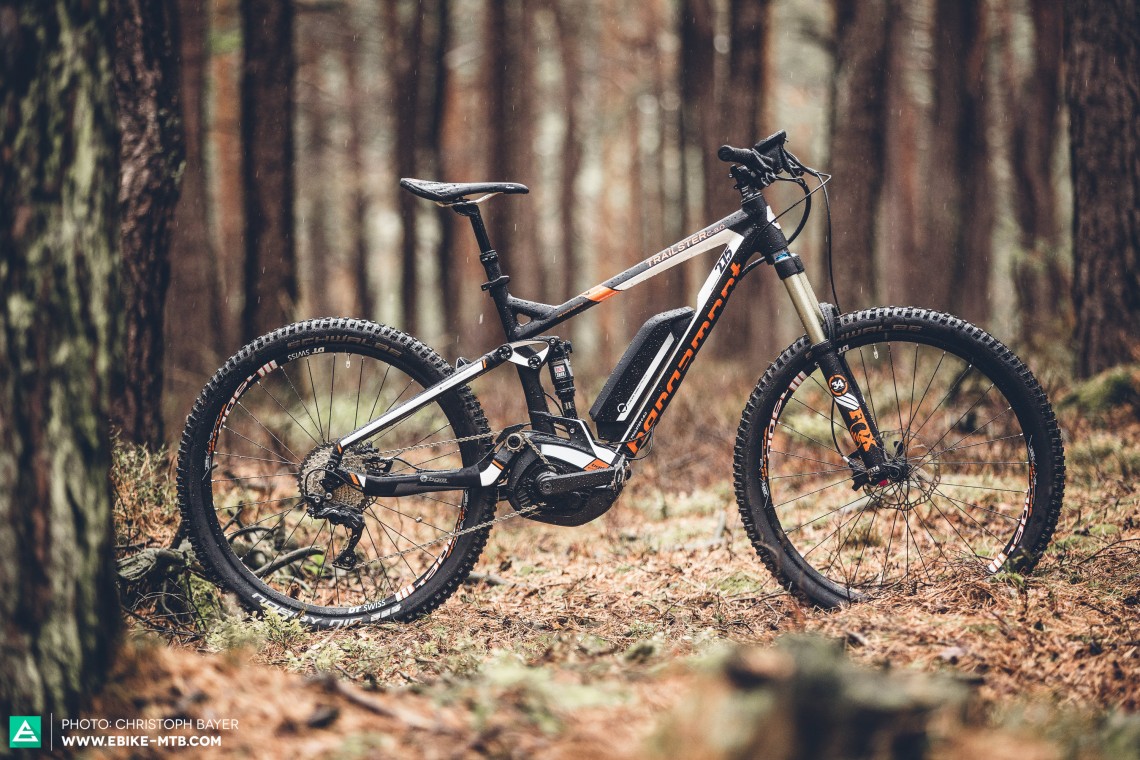
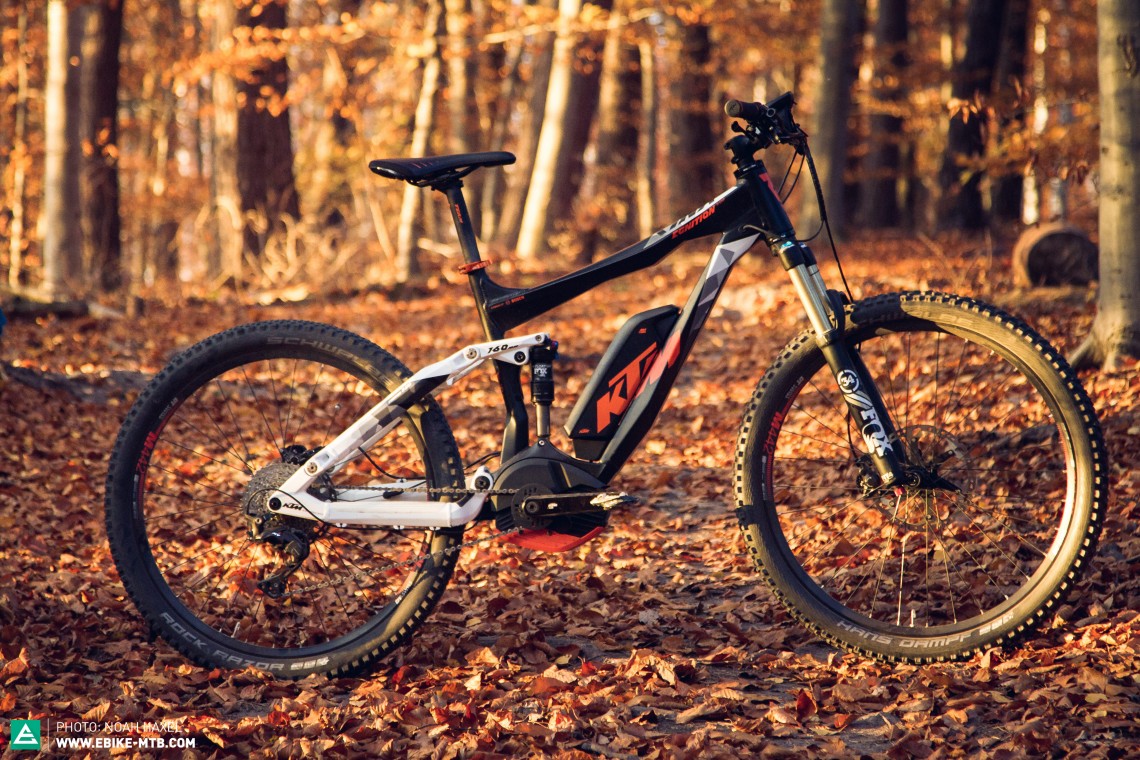
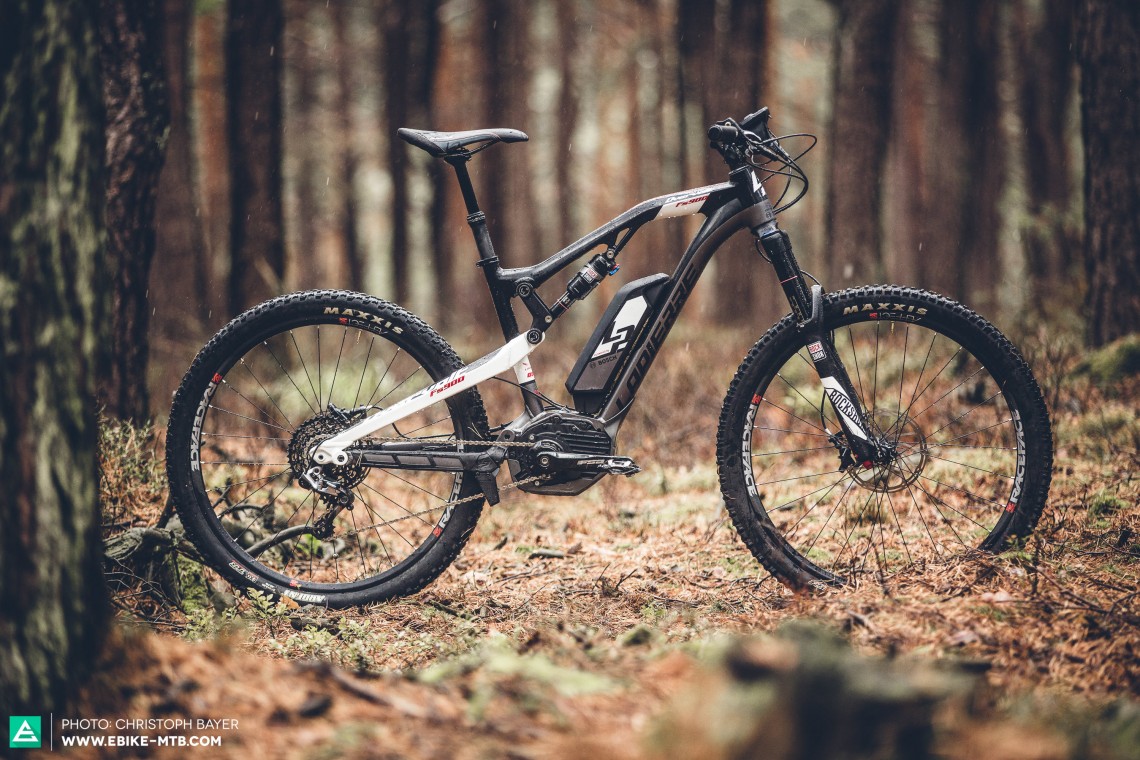
Despite almost identical travel, these bikes couldn’t have behaved more diversely. Haibike and Lapierre went for compact frames, satisfying all those riders for whom comfort and agility are the top priority. The Bergamont E-Line Trail C8.0 definitely feels most at home on mellow trails and is more than happy to be taken out for hours upon end. However, don’t expect too much from its cheap spec if you’re hammering the pedals. And speaking of limitations: the fork on the KTM Macina eGnition embodies this. For a lesson in how to do it right, just take a look at FLYER’s Uproc 6 and CUBE, with their Stereo Hybrid 140 HPA SL. They both feature a well-considered spec with geometry that works from top to toe whatever the terrain. They fill the rider with confidence, and you’ll find yourself grinning within a matter of seconds. However, our coveted E-MOUNTAINBIKE Best Value recommendation has to go to the CUBE due to its impressive overall performance and its great value for money. For the same price, namely € 5,499, you can also get your hands on the SCOTT E-Genius 710 Plus, enjoying a new level of grip and stability. Its chubby tyres roll any uneven terrain flat, and it turns rooty forest tracks into genuine flow trails. This completely new sensation when riding combined with its smoothness and stability is one which will benefit any rider whether you’re a pro or an amateur. Naturally, given the faultless performance of the E-Genius, it more than deserves the title of E-MOUNTAINBIKE Magazine Best of Test.
Tops & Flops
Flops:


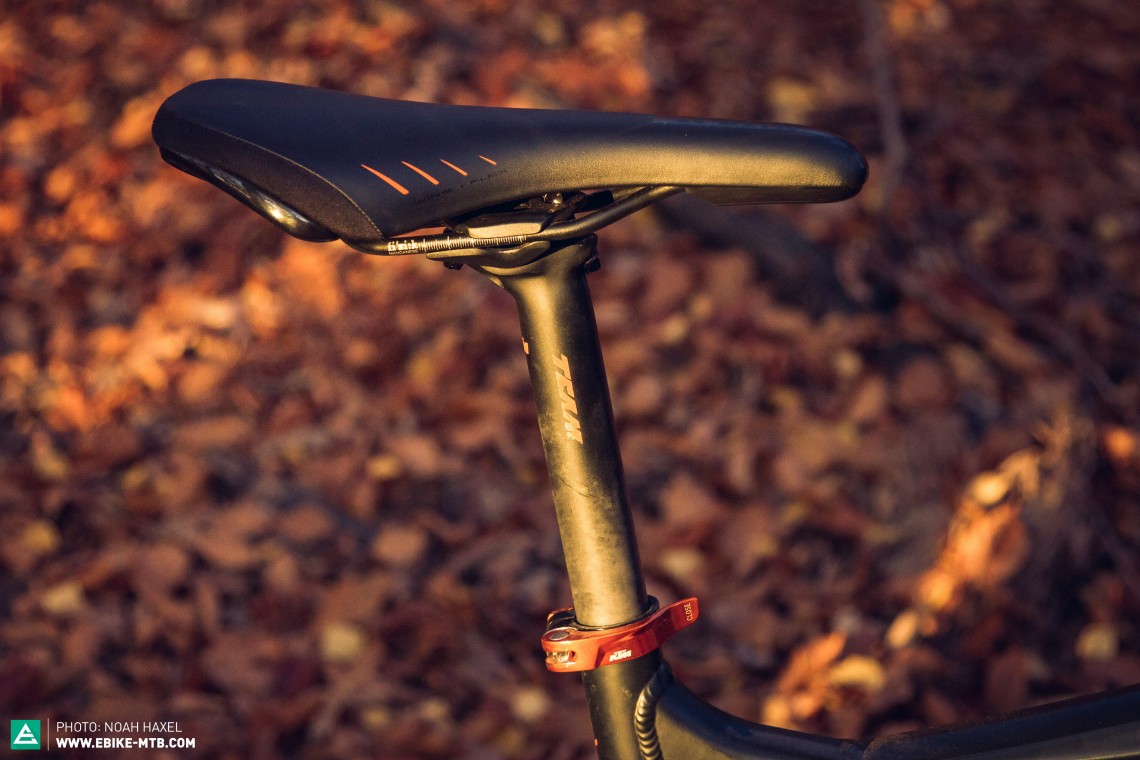
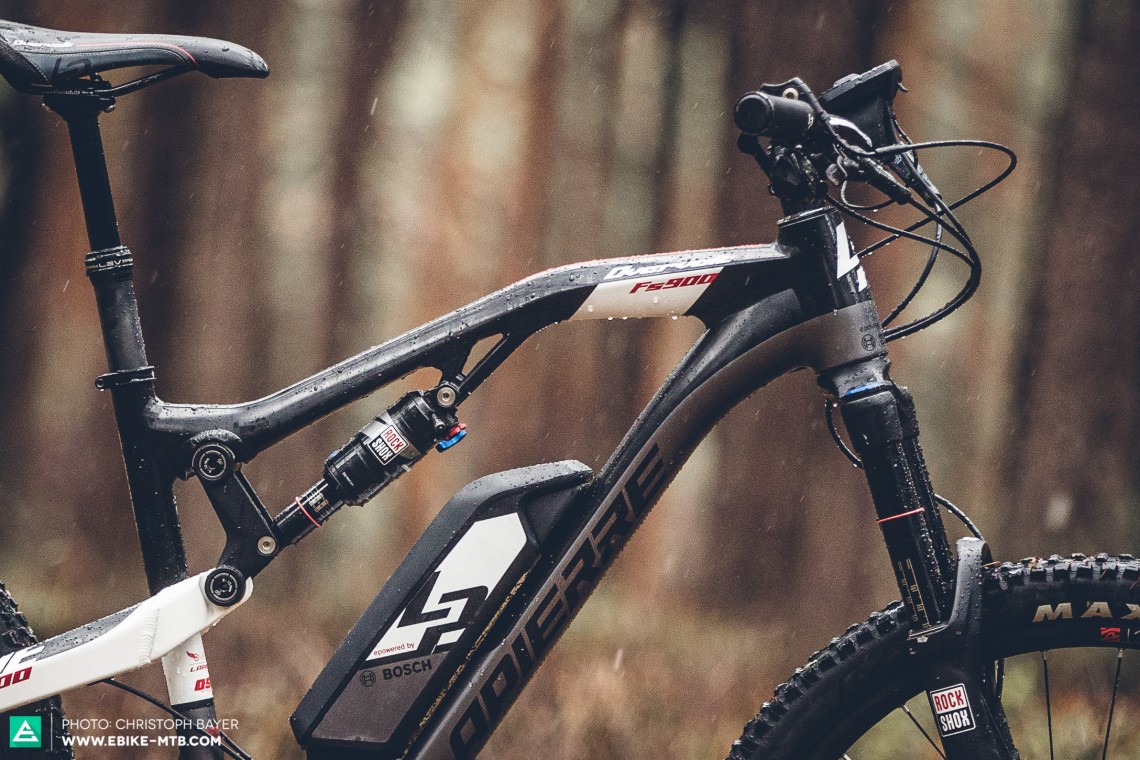
Tops:
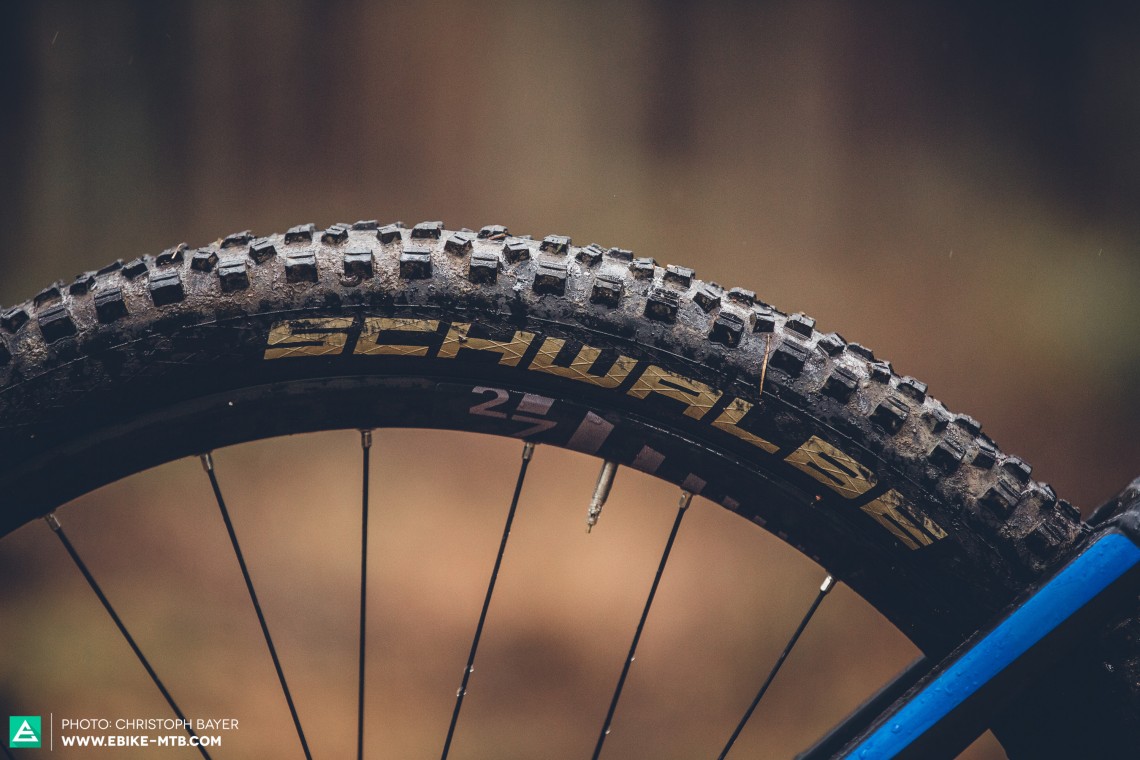
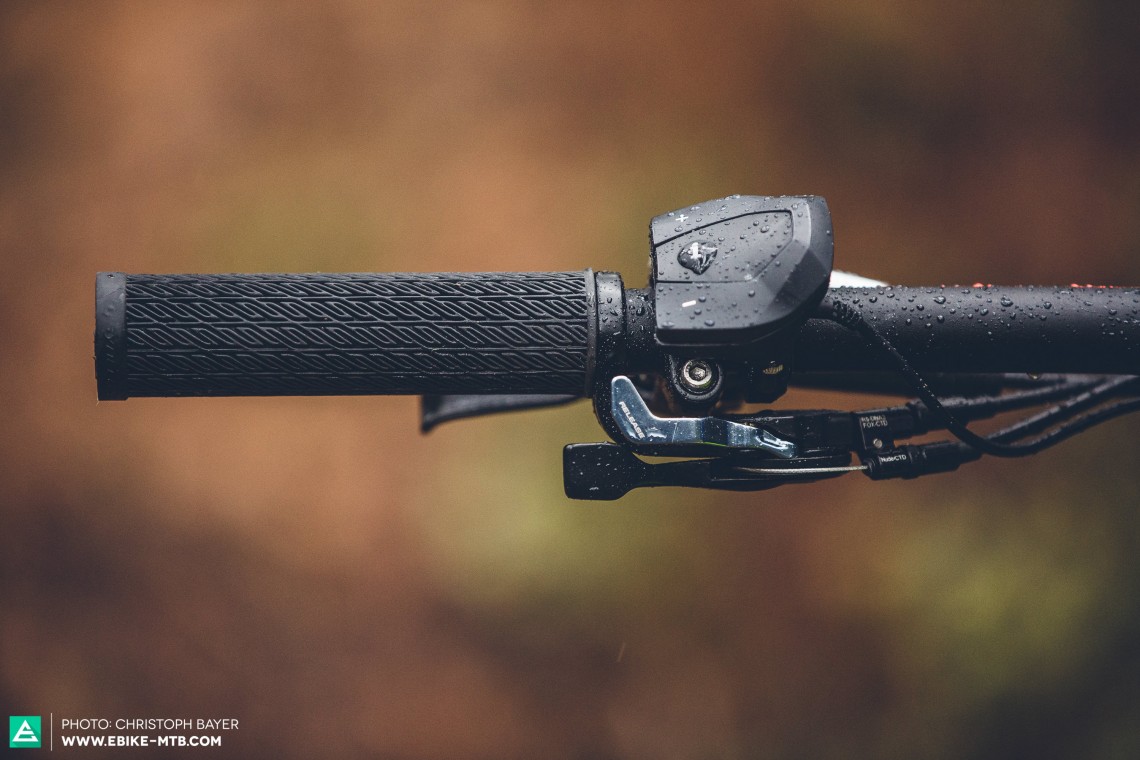
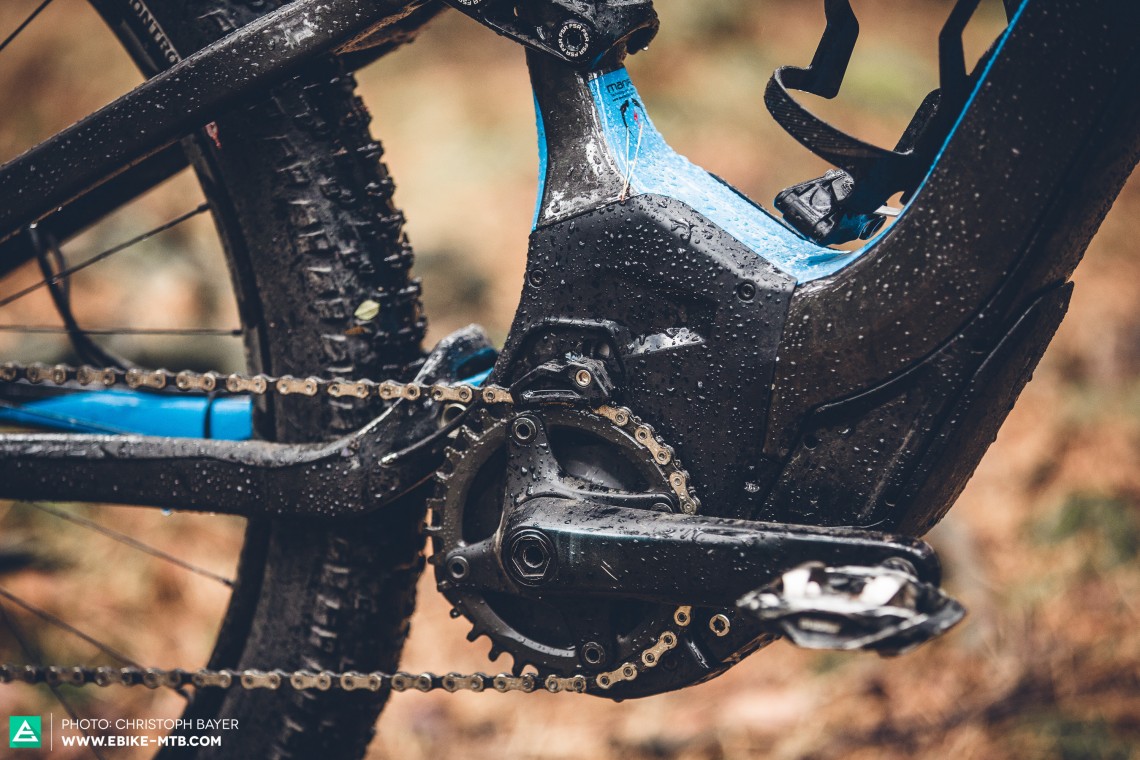
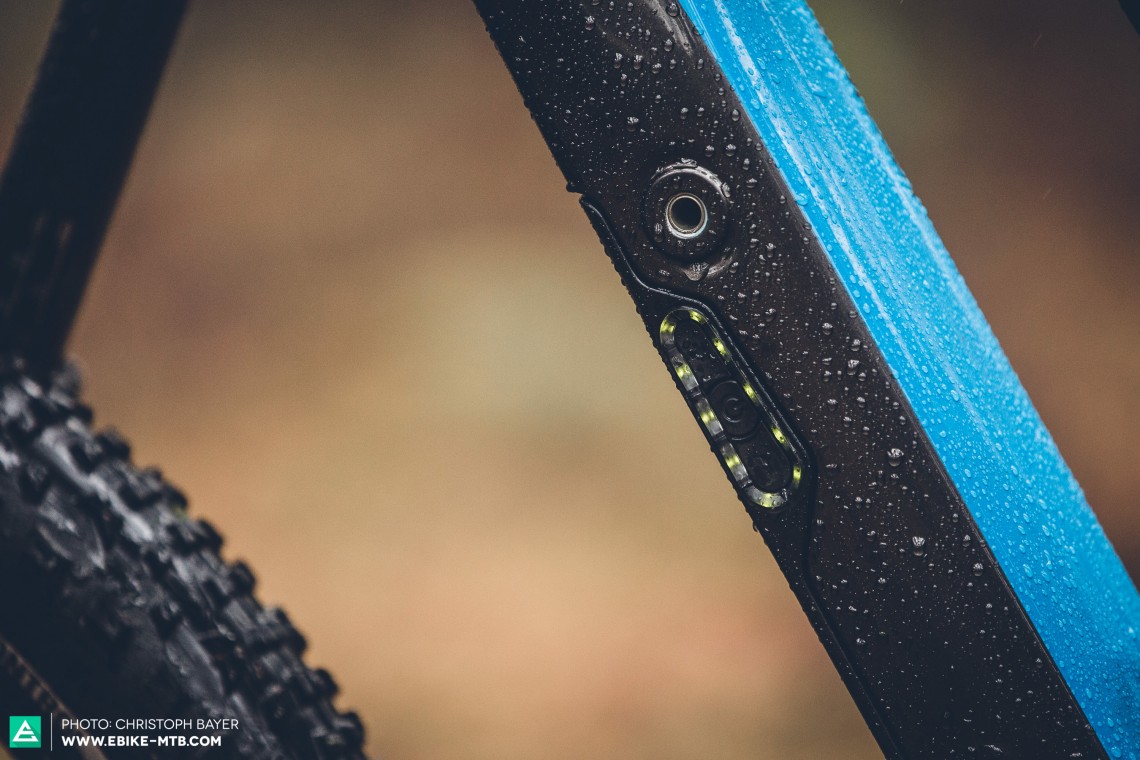
Read all our reviews: Bergamont E-Line Trailster C 8.0 | CUBE Stereo Hybrid 140 SL | FLYER Uproc6 8.90 | Haibike SDURO AllMtn Pro | LAPIERRE Overvolt FS 900 | ROTWILD R.X+ FS 27,5″ EVO | SCOTT E-Genius 710 Plus | Specialized Turbo Levo FSR Expert 6Fattie | KTM Macina eGnition Cx5
Update November 2016: This article is from 2015, in the meantime we’ve published a more current group test: The most exciting E-MTBs of 2017 in comparison
Words: Christoph Bayer Photos: Christoph Bayer, Noah Haxel
Did you enjoy this article? If so, we would be stoked if you decide to support us with a monthly contribution. By becoming a supporter of E-MOUNTAINBIKE, you will help secure a sustainable future for high-quality cycling journalism. Click here to learn more.









